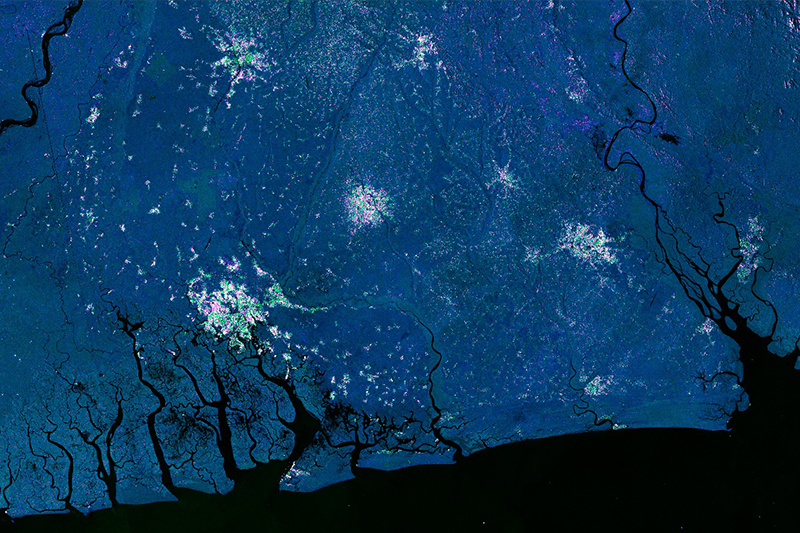
We’re working to make Copernicus Sentinel-1 radar satellite data available in an analysis-ready format within the Digital Earth Africa platform by the end of 2020.
For the first time in Africa, Sentinel-1 radar data will be routinely processed for the entire continent, and through Digital Earth Africa will provide a time-series of information. We’ve engaged European Earth observation (EO) industry leader Sinergise to process the Sentinel-1 radar data from 2017, which is captured every 12 days, totalling approximately 50,000 scenes every year.
Radar satellite imagery is important for Africa as it is not affected by cloud cover. Countries that experience frequent clouds often find other satellite imagery less effective, but the use of radar data can overcome this challenge.
To make the data easier to use, it will be processed according to Analysis Ready Data (ARD) specifications developed by the Committee on Earth Observing Satellites (CEOS). ARD reduces the barrier to use, allowing thematic specialists in areas such as land cover, forest management, agriculture and water resources to apply the data.
While satellite radar data has many uses, the applications traditionally call for high levels of expertise in pre-processing and interpretation. CEOS has been developing ARD specifications since 2016 to allow data to be processed in an easier to use and interoperable format. The Normalised Radar Backscatter is the simplest product as it allows changes through time to be detected, for example it is used in Switzerland to measure changes in seasonal snow cover.
There are now vast amounts of free and open EO data, but the next step to delivering impact is for the data to be readily available in a ready to use form. Through this investment, we aim to demonstrate the immense value of ARD to Africa, and to pioneer approaches to global ARD pipelines. Ultimately we aim for space agencies to routinely produce analysis ready data, but they first need to see that users value these products.
To learn more about planned input datasets, see our Technical Roadmap.